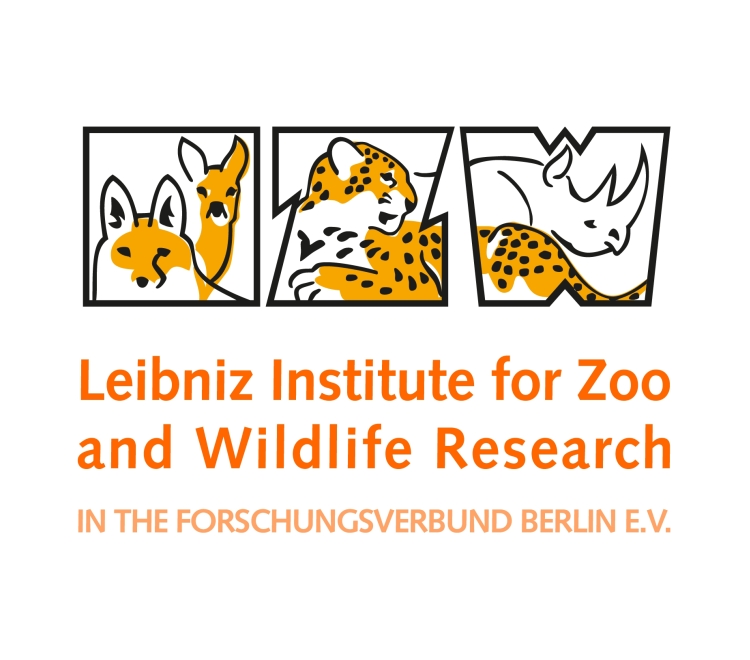The Leibniz-IZW is an internationally renowned German research institute. It is part of the Forschungsverbund Berlin e.V. and a member of the Leibniz Association. Our goal is to understand the adaptability of wildlife in the context of global change and to contribute to the enhancement of the survival of viable wildlife populations. For this purpose, we investigate the diversity of life histories, the mechanisms of evolutionary adaptations and their limits, including diseases, as well as the interrelations of wildlife with their environment and people. We use expertise from biology and veterinary medicine in an interdisciplinary approach to conduct fundamental and applied research – from the molecular to the landscape level – in close dialogue with the public and stakeholders. Additionally, we are committed to unique and high-quality services for the scientific community.
+++ Current information on African swine fever: The Leibniz-IZW conducts research on the population dynamics, on models of disease outbreaks in wild boars and on the ecology and human-wildlife interaction in urban areas. African swine fever is a reportable disease in domestic swine and therefor is the purview of the respective federal state laboratories and the Friedrich-Loeffler-Institut (Federal Research Institute for Animal Health) FLI. +++
News
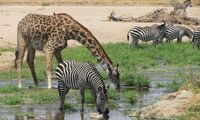
Out on dry land: Water shortage threatens species in Ruaha National Park in Tanzania
Climate change is not the only cause of arid landscapes: a research team led by the Leibniz Institute for Zoo and Wildlife Research (Leibniz-IZW) has investigated the consequences of increased water abstraction for agriculture and livestock farming from the Great Ruaha River. This river, which used to flow continuously, now dries up for months at a time. The scientists showed that some herbivores were able to partially compensate for the temporary lack of water through their diet, whereas others have little or no ability to do so. In particular, African buffalo, plains zebra and waterbuck were sometimes severely restricted in their habitat use as a result. The effects of water scarcity on Ruaha National Park’s biodiversity are described in an article in the scientific journal “Wildlife Biology”.
Read more … Out on dry land: Water shortage threatens species in Ruaha National Park in Tanzania

Wind energy and bat conservation: scientists call for the global application of measures to reduce fatalities
The construction of wind turbines as a cornerstone for the production of climate-friendly electricity is rapidly increasing all over the world – and everywhere this results in major challenges for bats, which die directly at the turbines or lose valuable habitats in their vicinity. A research team from Australia, Brazil, France, Germany, Kenya, Puerto Rico, Taiwan, the United Kingdom and the USA now analysed possible solutions to this green-green conflict on a global scale and identified the steps required to improve the balance between climate protection and biodiversity conservation. For example, scientifically proven methods for reducing bat casualties need to be implemented more consistently into regulations for the operation of wind turbines worldwide and significant research gaps on the interaction of bats with turbines in countries of the Global South and in tropical ecosystems need to be closed, the team writes in the scientific journal “BioScience”.
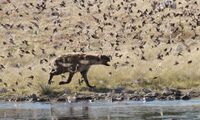
Small birds spice up the already diverse diet of spotted hyenas in Namibia
Hyenas are generalist predators (and scavengers) with a broad range of prey species. They are known for hunting (or scavenging) larger mammals such as antelopes and occasionally feed on smaller mammals and reptiles. Being flexible in the choice of prey is a strategy of generalists – and this even extends to small passerine birds, as scientists from the Leibniz Institute for Zoo and Wildlife Research (Leibniz-IZW) and the University of Ljubljana observed in Namibia: Spotted hyenas pursued red-billed queleas, picked them from the ground or the surface of a waterhole and swallowed them whole, at a success rate of approximately one bird every three minutes. These observations were described for the first time in word, photos and videos in the scientific journal “Food Webs”.
Read more … Small birds spice up the already diverse diet of spotted hyenas in Namibia
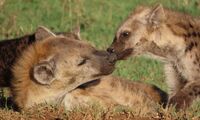
When inequality is more than “skin-deep”: Social status leaves traces in the epigenome of spotted hyenas in Tanzania
A research consortium led by scientists from the Leibniz Institute for Zoo and Wildlife Research (Leibniz-IZW) provide evidence that social behaviour and social status are reflected at the molecular level of gene activation (epigenome) in juvenile and adult free-ranging spotted hyenas. They analysed non-invasively collected gut epithelium samples from both high-ranking and low-ranking female hyenas and showed that rank differences were associated with epigenetic signatures of social inequality, i.e., the pattern of activation or switching off of genes that regulate important physiological processes such as energy conversion and immune response in several genome regions. The results, published in the scientific journal “Communications Biology”, contribute to a better understanding of the role of epigenetic mechanisms in the interplay of social, environmental and physiological factors in the life of a highly social mammal.
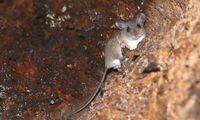
A rare recent case of retrovirus integration: An infectious gibbon ape leukaemia virus is colonising a rodent’s genome in New Guinea
Retroviruses are viruses that multiply by incorporating their genes into the genome of a host cell. If the infected cell is a germ cell, the retrovirus can then be passed on to the next generation as an “endogenous” retrovirus (ERV) and spread as part of the host genome in that host species. In vertebrates, ERVs are ubiquitous and sometimes make up 10 per cent of the host genome. However, most retrovirus integrations are very old, already degraded and therefore inactive – their initial impact on host health has been minimised by millions of years of evolution. A research team led by the Leibniz Institute for Zoo and Wildlife Research (Leibniz-IZW) has now discovered a recent case of retrovirus colonisation in a rodent from New Guinea, the white-bellied mosaic-tailed rat. In a paper in the scientific journal "Proceedings of the National Academy of Sciences", they describe this new model of virus integration. The observations on this process will help to improve our understanding how retroviruses rewrite host genomes.
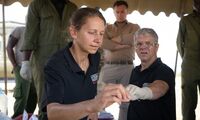
World’s first successful embryo transfer in rhinos paves the way for saving the northern white rhinos from extinction
BioRescue, an international consortium of scientists and conservationists, succeeded in achieving the world’s first pregnancy of a rhinoceros after an embryo transfer. The southern white rhino embryo was produced in vitro from collected egg cells and sperm and transferred into a southern white rhino surrogate mother at the Ol Pejeta Conservancy in Kenya on September 24, 2023. The BioRescue team confirmed a pregnancy of 70 days with a well-developed 6.4 cm long male embryo. The successful embryo transfer and pregnancy are a proof of concept and allow to now safely move to the transfer of northern white rhino embryos – a cornerstone in the mission to save the northern white rhino from extinction.
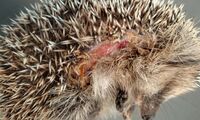
New research into hedgehogs injured by robotic lawn mowers discovers a significant but solvable animal welfare and conservation problem
Scientists from the Leibniz Institute for Zoo and Wildlife Research (Leibniz-IZW) analysed 370 documented cases of hedgehogs being injured (cut) by electric gardening tools in Germany. Almost half of the hedgehogs found between June 2022 and September 2023 did not survive the injuries. The data reveal a serious animal welfare and conservation issue for these specially protected animals, as most hedgehogs were only found hours or even days after the accidents. In two further studies, an international team of scientists analysed how hedgehogs behaviourally respond to an approaching robotic lawn mower. The observed behavioural responses were used to develop a scientifically sound, standardised safety test to protect hedgehogs for robotic devices. The three scientific papers are published in the special issue “Applied Hedgehog Conservation Research” of the scientific journal “Animals”.
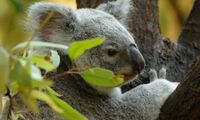
Helping koalas to survive: world's largest koala pedigree genomic database aims to protect the population of the endangered species
An international research consortium with the participation of the Leibniz Institute for Zoo and Wildlife Research (Leibniz-IZW) is building the world's largest koala pedigree genomic database. This will help to improve the understanding and prevention of diseases, protect endangered koala populations, and thus ensure that koalas prosper everywhere in the long run. Among key challenges for these animals is the koala retrovirus (KoRV), which increases their susceptibility to bacterial infections, leukaemia and other types of cancer. All koalas in zoological gardens in North America and Europe as well as almost all free-ranging koalas in Australia carry this virus.
